Welcome to On Verticality. This blog explores the innate human need to escape the surface of the earth, and our struggles to do so throughout history. If you’re new here, a good place to start is the Theory of Verticality section or the Introduction to Verticality. If you want to receive updates on what’s new with the blog, you can use the Subscribe page to sign up. Thanks for visiting!
Click to filter posts by the three main subjects for the blog : Architecture, Flight and Mountains.

Introduction to Verticality
Ever since humans descended from the trees and out onto the savannah, we’ve gazed upward in wonder at the sky and the stars. Until fairly recently in our history, this space above our heads was a mystery. Our ancestors would witness the diurnal movements of the Sun and the Moon, and the brilliance of a glowing sunrise or sunset. The clouds would drop water and thundering bolts of light and energy. At night, they would witness a spectacular tapestry of light-emitting dots, and connect them into elaborate shapes. The sky has been a continual source of wonder throughout our history, and we’ve spent countless hours thinking about the world we see above our heads.
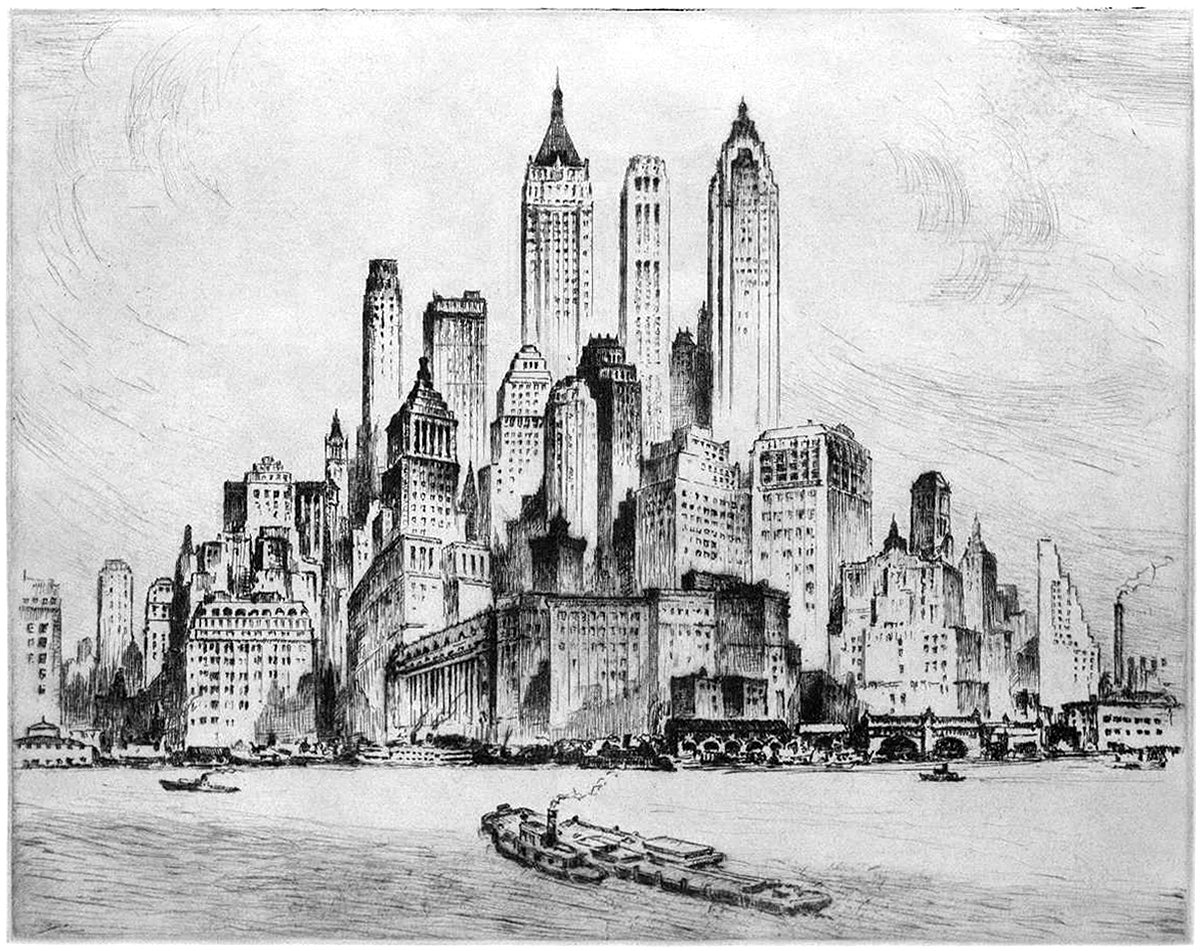
Nat Lowell and the Tip of Manhattan
Pictured here is an etching by artist Nat Lowell, showing the southern tip of Manhattan, circa 1940. The perspective is from the harbor, and Lowell focuses on three towers, which are the tallest of the bunch. From left to right, they include 40 Wall Street, 20 Exchange Place, and 70 Pine Street. The composition isn’t literal, and Lowell has taken some liberties to arrange the buildings into a mountain of sorts, with the three aforementioned towers at the summit.
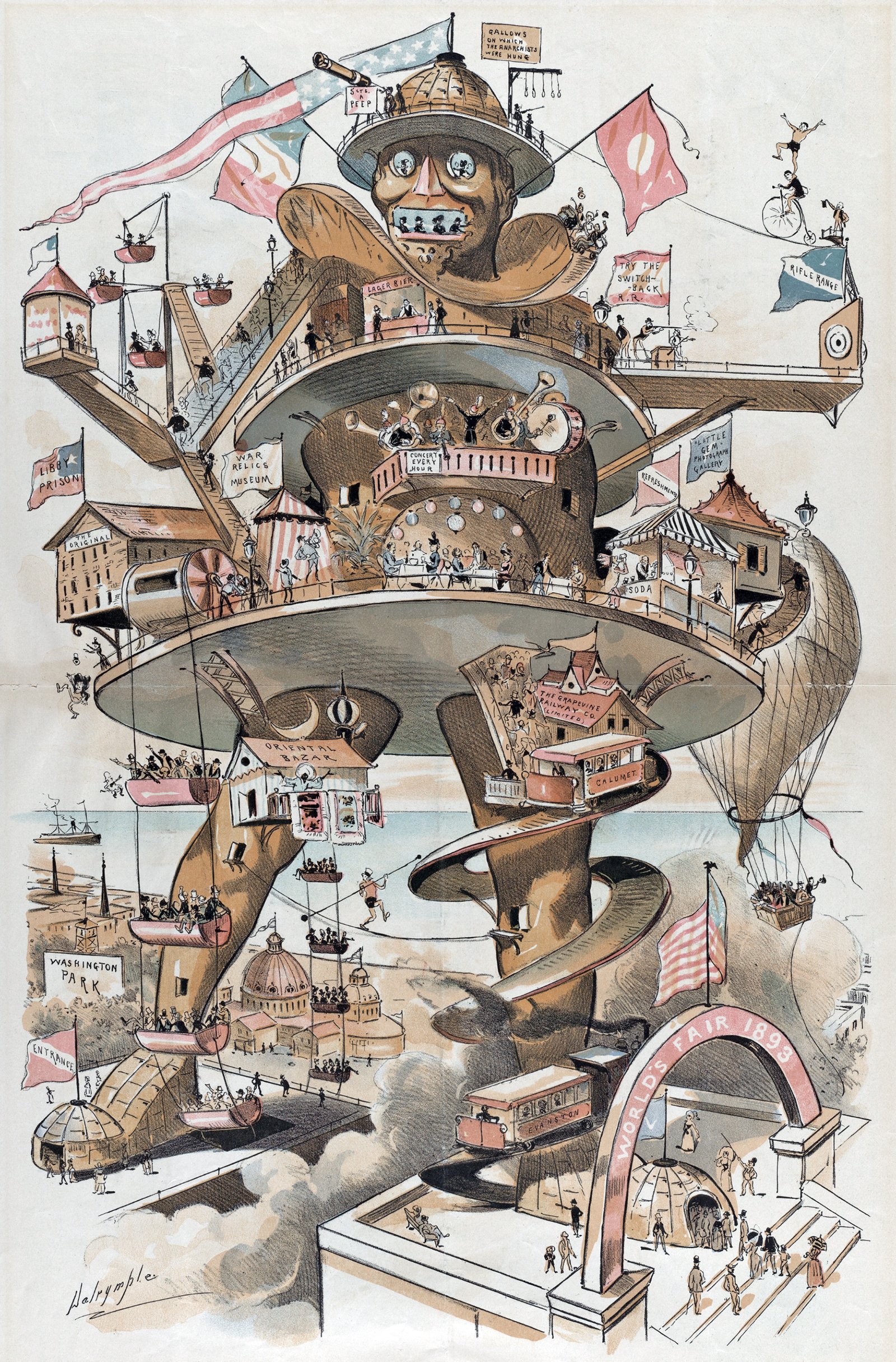
The Colossus of Chicago
The caption for the illustration shown above reads: Puck’s suggestion for the World’s Fair - the “Colossus of Chicago” would knock out the Eiffel Tower. It was drawn by Louis Dalrymple for the 8 October 1890 issue of Puck magazine, a popular humor and satire publication. With Colossus, Dalrymple was mocking a series of proposals leading up to the 1893 World’s Fair that sought to out-do the Eiffel Tower from the previous World’s Fair in Paris. Eiffel had become so popular that the organizers of the 1893 World’s Fair wanted to re-create its success in Chicago.
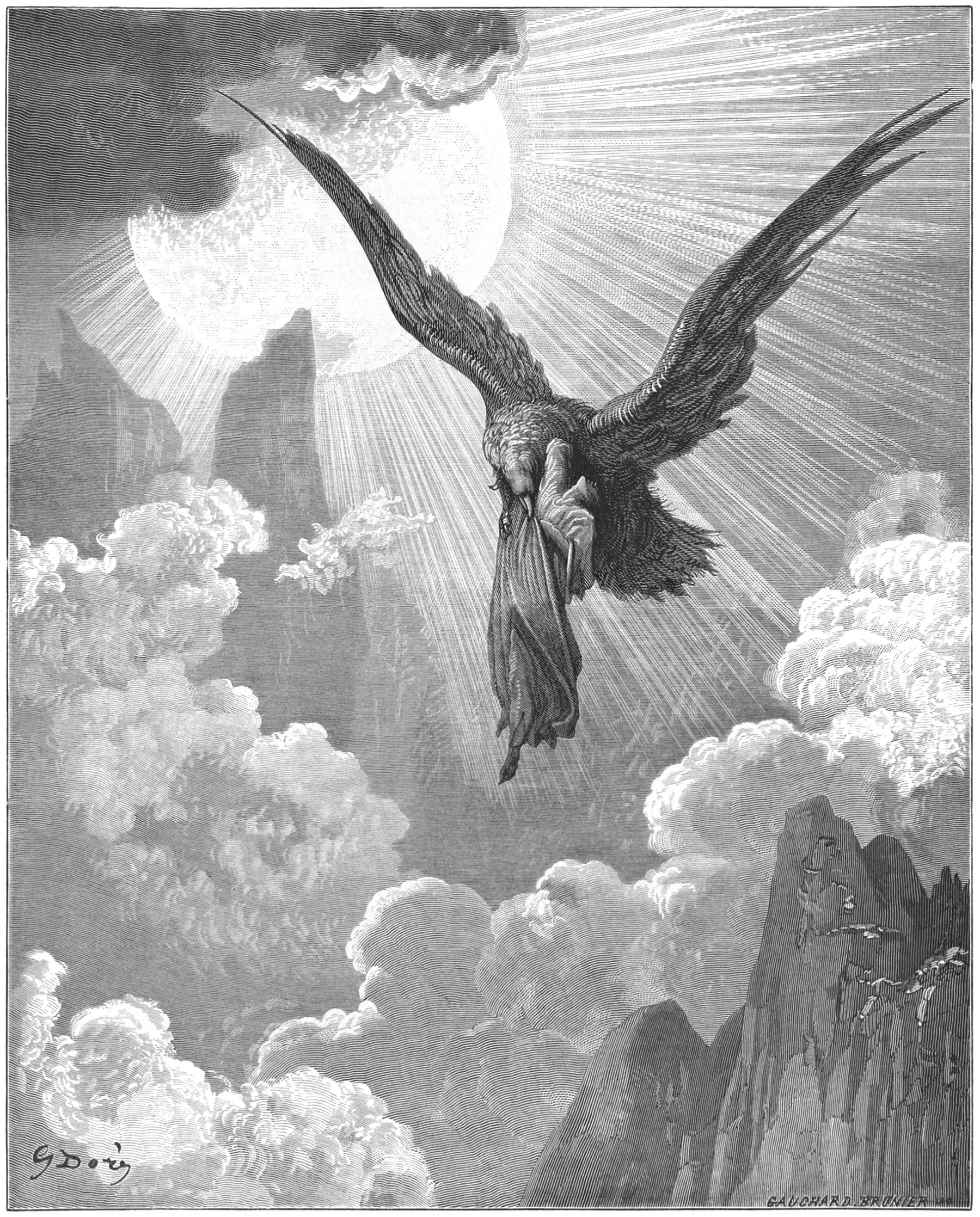
Dante and the Eagle
Pictured above is an illustration by Gustave Doré showing a scene from Dante’s Purgatorio. The scene takes place in Canto IX, as Dante is carried by an Eagle to the entry point of Purgatory. As I’ve previously written, the entire structure of Dante’s Divine Comedy is rooted in verticality, and this scene is just one example of this. Purgatory is a mountain which Dante must ascend in order to reach Paradise, or heaven.
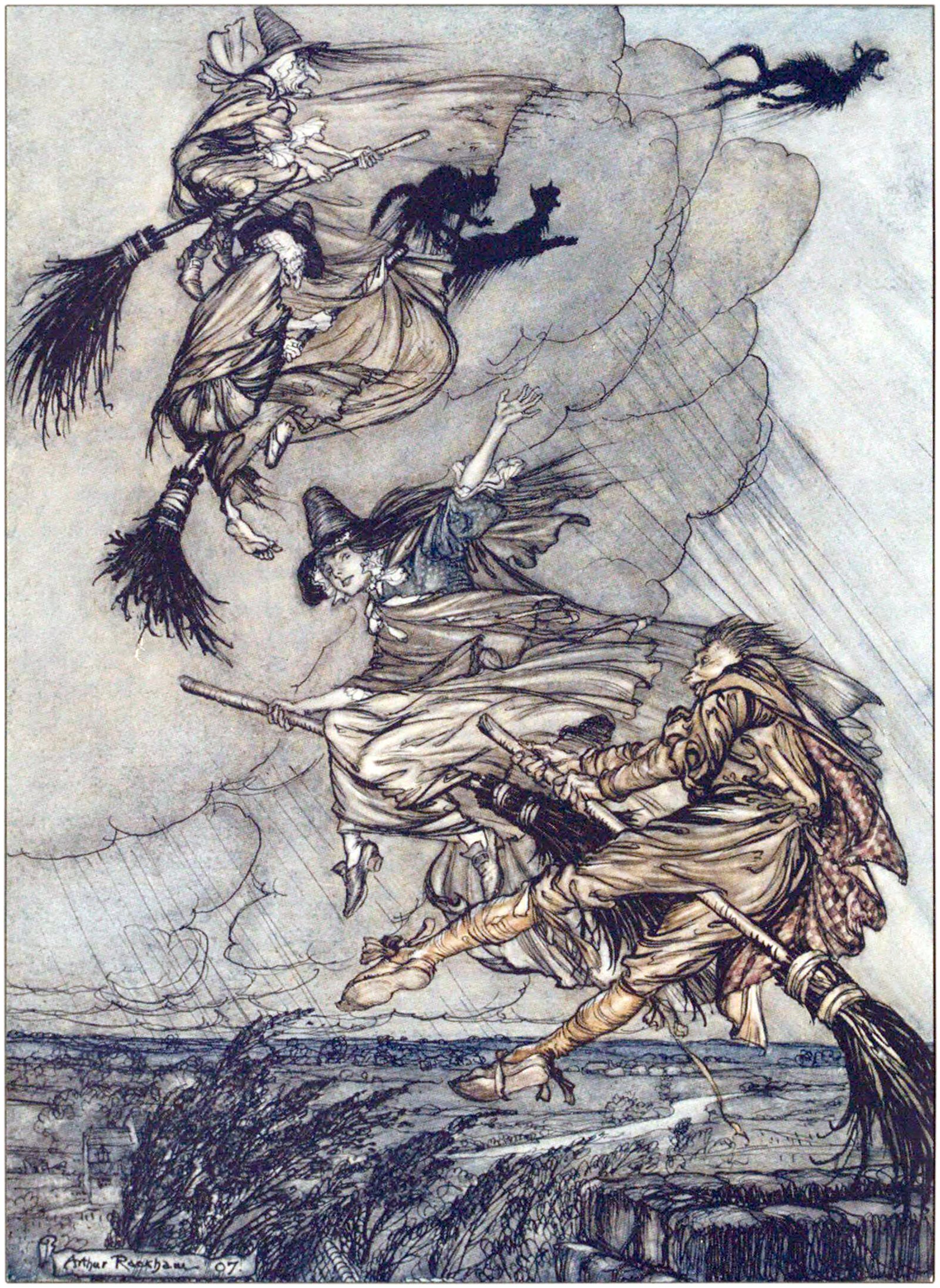
The Witches’ Frolic
Pictured above is an illustration by Arthur Rackham showing a scene from the Thomas Ingoldsby legend The Witches’ Frolic. The story follows a young man Robin as he interacts with a group of witches, and verticality is featured throughout the tale.
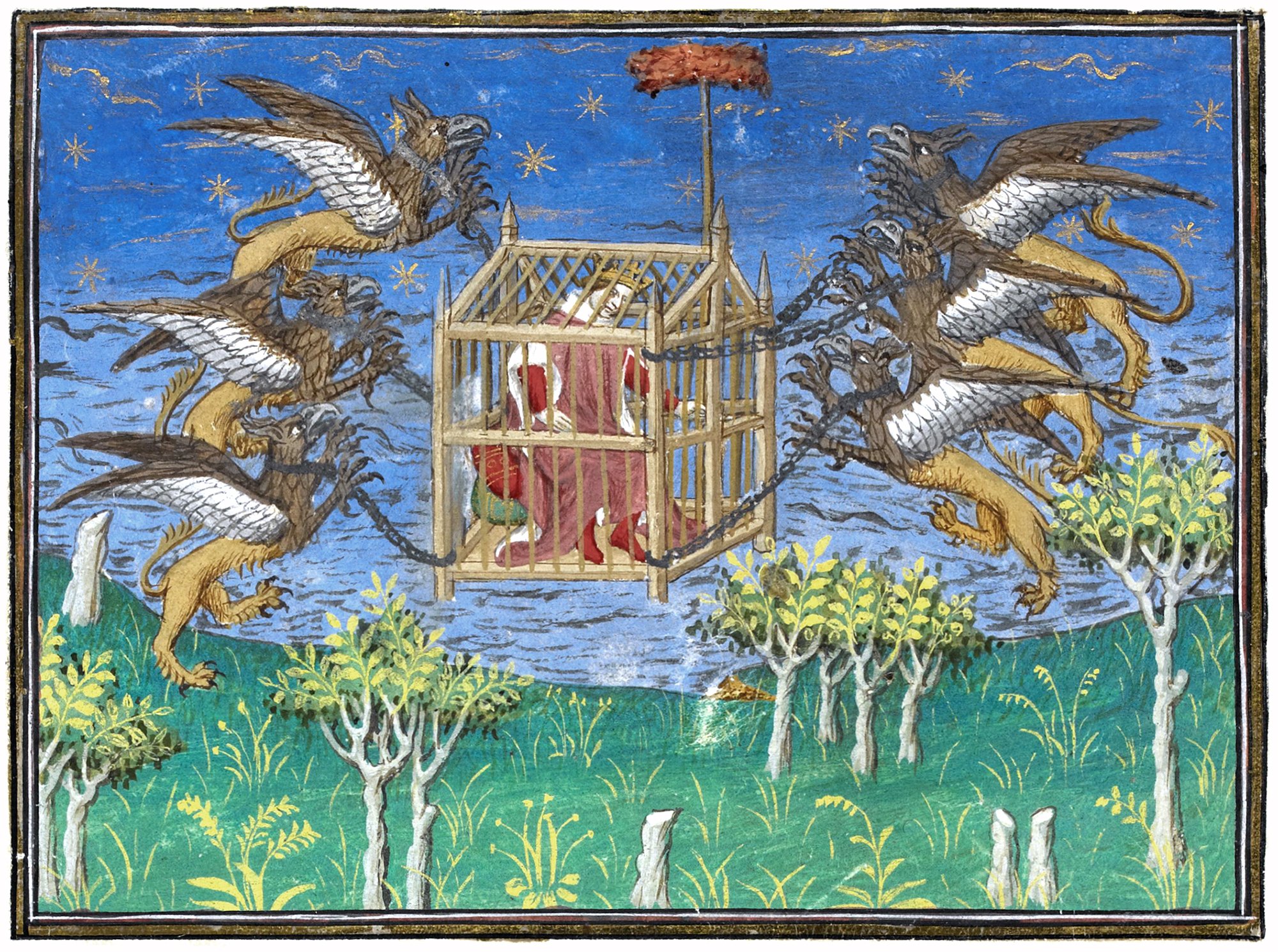
Alexander the Great’s Flying Machine
The oldest myths and legends about human flight usually involve birds and other winged creatures that were already known to fly. These creatures were ready-made-packages of sorts. Harnessing their ability to fly by means of control provided the easiest and quickest path to human flight. Pictured above is one such example of this. It’s a mythical flying machine built by Alexander the Great.
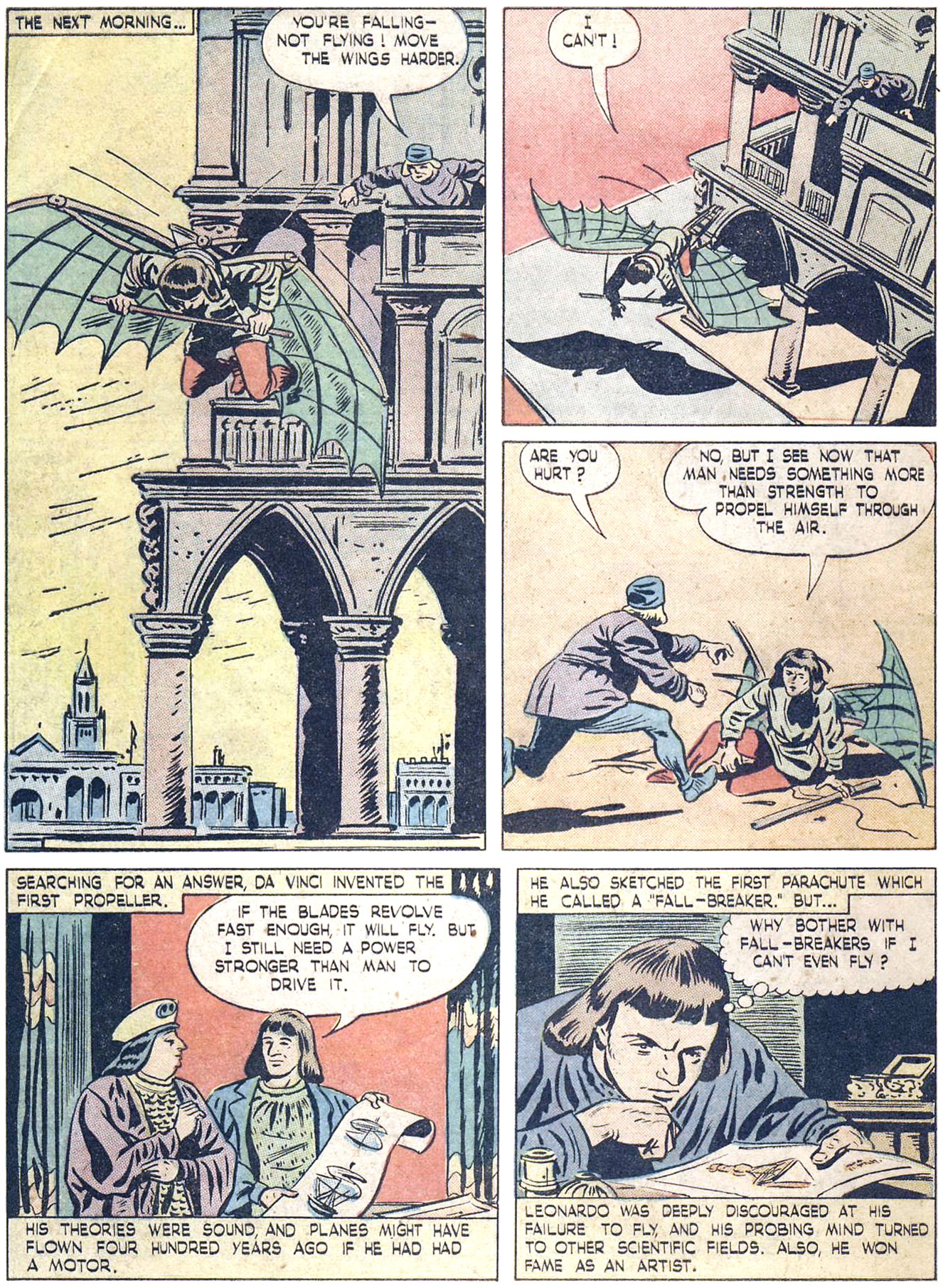
Leonardo da Vinci : 500 Years Too Soon
I see now that man needs something more than strength to propel himself through the air.
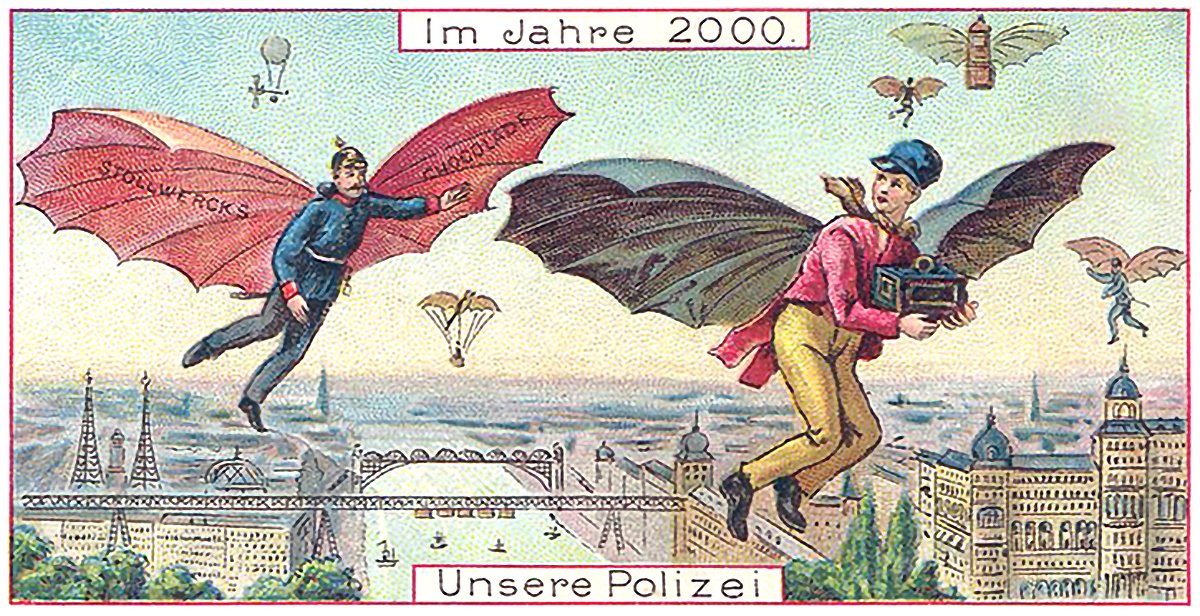
Im Jahre 2000 : In the Year 2000
The early twentieth century was a time of optimism towards the future. Aeronautics and flight were on the public’s consciousness, and there was much speculation about how the future would look once humanity conquered the skies. Pictured here is one such vision. It’s from a set of six cards titled Im Jahre 2000, which is German for In the Year 2000. What’s interesting about the set is that three of the cards deal with flight.
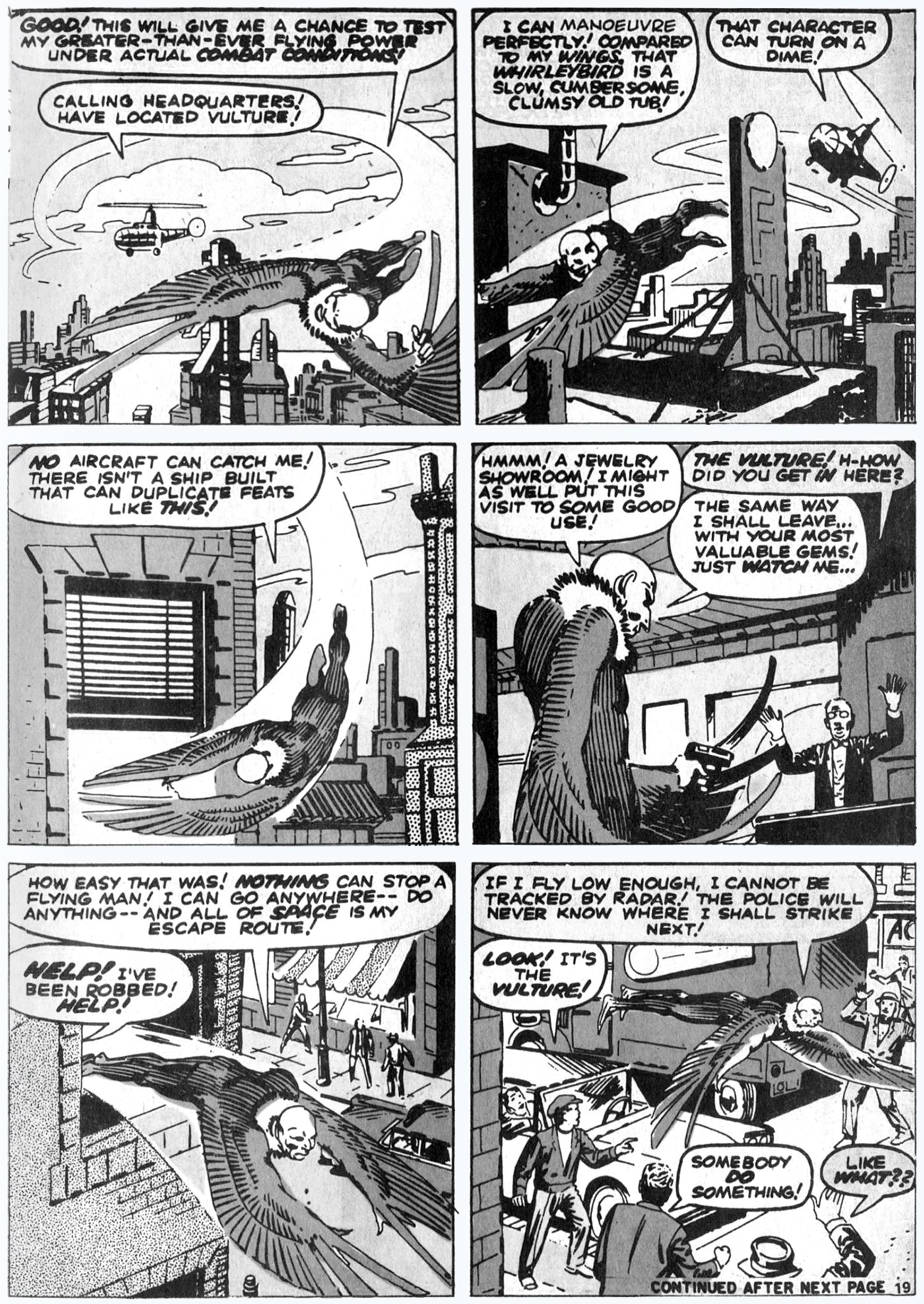
Nothing can stop a flying man!
In many ways, comic books function as folk tales for modern society. They tell stories of the eternal conflict of good and evil, with super-human characters who can do things common people can’t. Of these abilities, the most common is flight. The ability to fly is something every person understands, and it gives any character an immediate and excessive advantage over anyone who can’t. Pictured above is a page from a Spider-Man comic from 1973, showing the villain testing out his newly-acquired flying power.
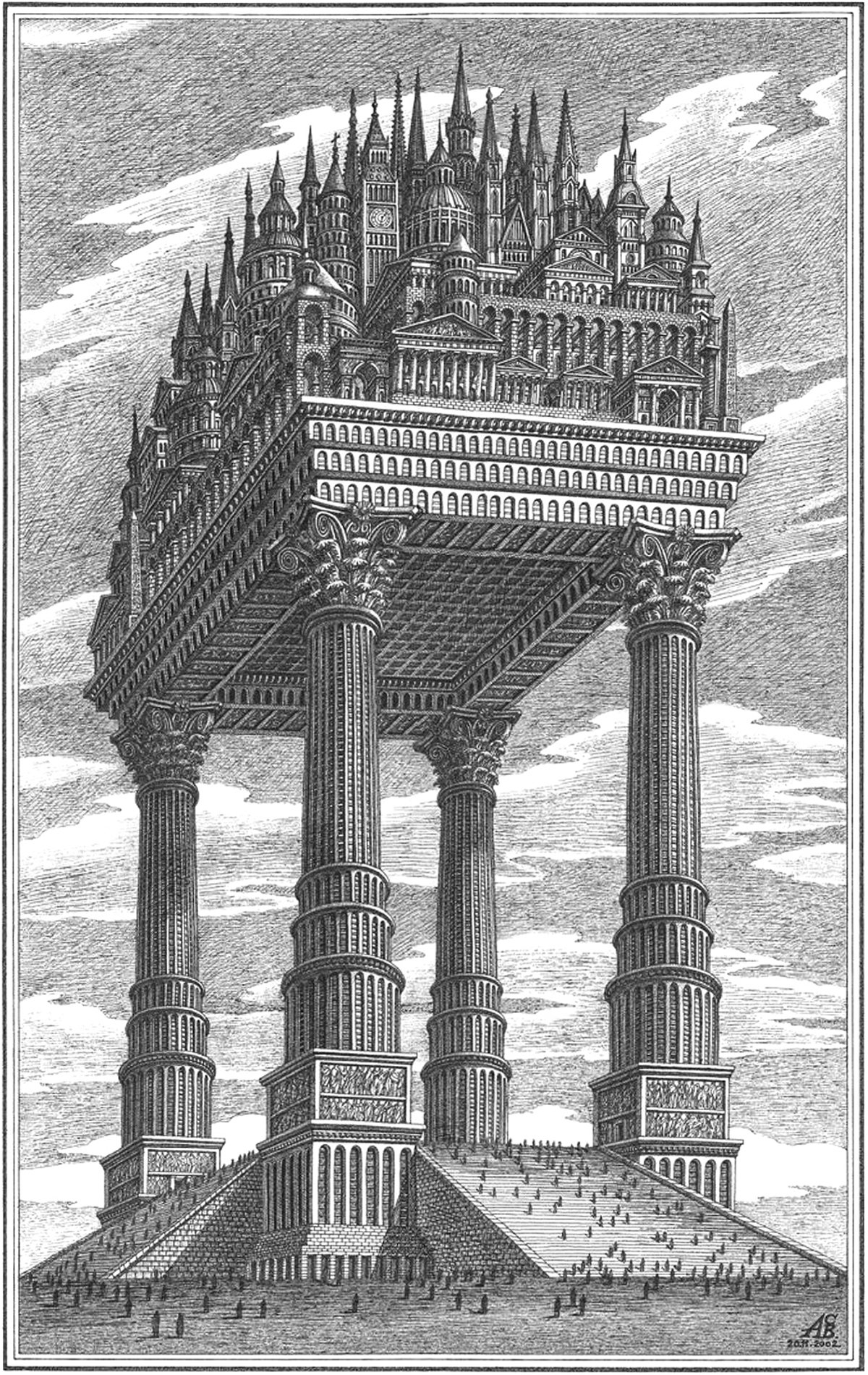
The Magic City
Pictured above is an illustration by Russian architectural theorist Arthur Skizhali-Weiss. It’s part of a series called The Magic City, which includes fictional realities dreamed up by the architect from 1999 to 2014. Apart from being an interesting composition of architectural forms, it embodies a few themes related to verticality.
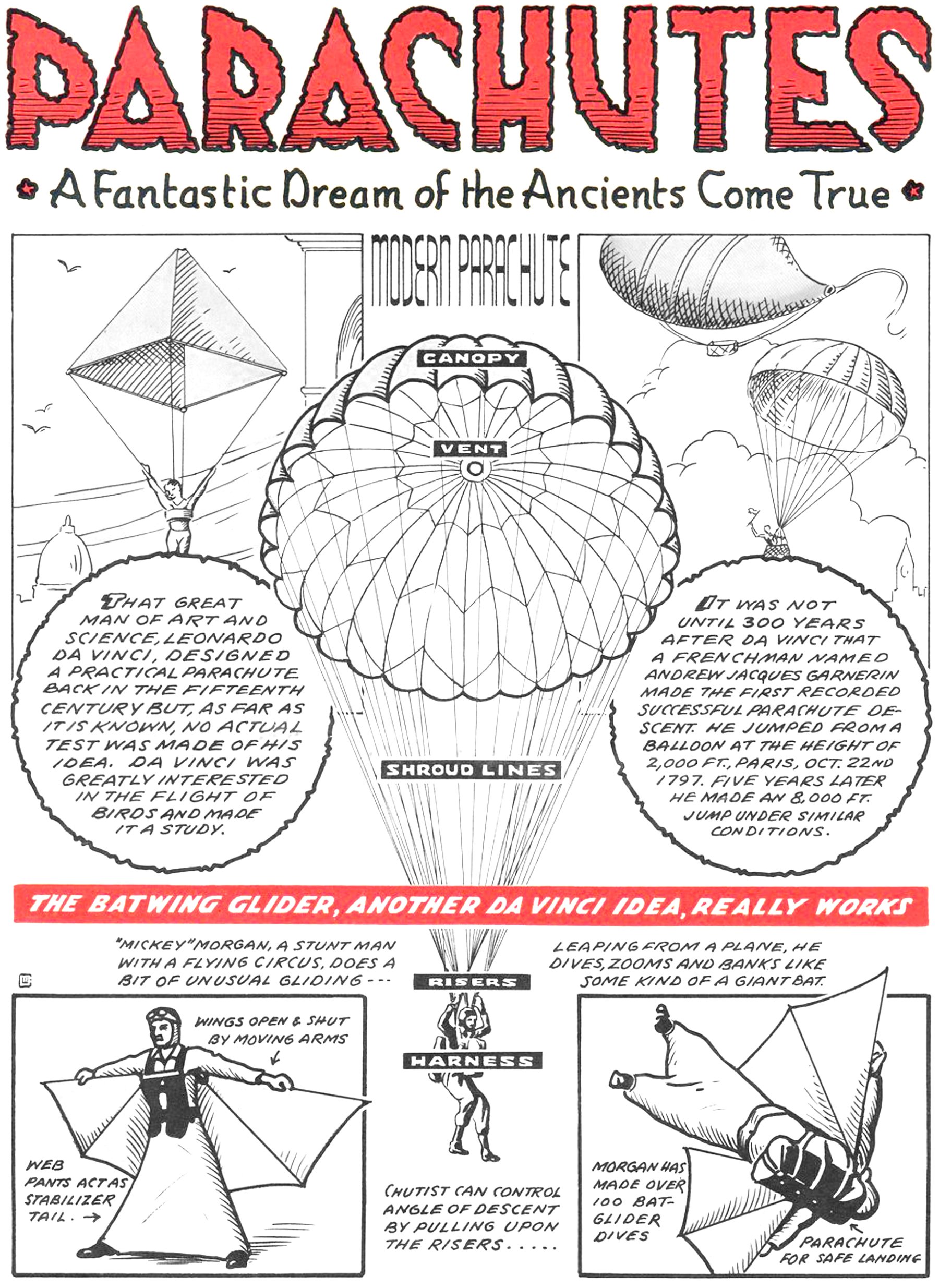
Parachutes : A Fantastic Dream of the Ancients Come True
Pictured above is a page from a War Heroes comic book from 1943. It features a few examples of parachutes and a flying suit called the Batwing Glider. At the center of the page is a modern parachute, complete with its canopy, vent, shroud lines, risers and harness. Flanking this drawing are two historical examples of parachutes. The first is a sketch from Leonardo da Vinci’s notebooks circa 1495, and the second is the world’s first successful parachute descent by André-Jacques Garnerin in 1797. This triad presents a concise, albeit incomplete history of parachute design, but it does do a good job of visually connecting a modern parachute to its ancestors.
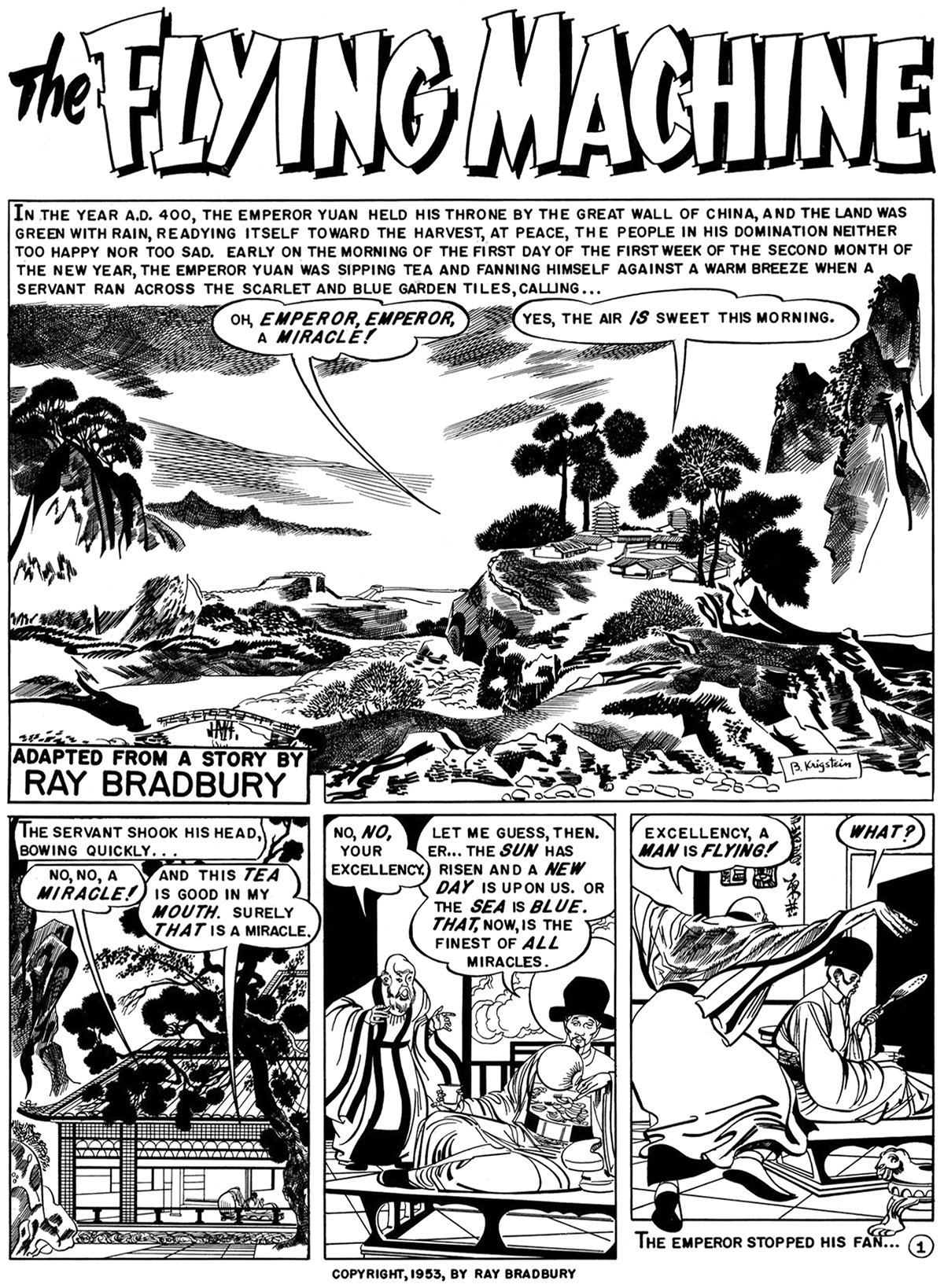
The Flying Machine by Ray Bradbury
With great power comes great responsibility. This is the major theme of Ray Bradbury’s short story from 1953, titled The Flying Machine. It was adapted into a comic in 1954 by Al Feldstein, and the full piece is pictured here. It tells the story of a meeting between an emperor and an inventor who has built a flying machine. The inventor is an optimist who experiences the full delights of flying, while the emperor is a pessimist who fears the technology will fall into the wrong hands. It’s a theme that runs much deeper than human flight, but Bradbury’s choice to feature the flying machine demonstrates the power of flight for humanity.
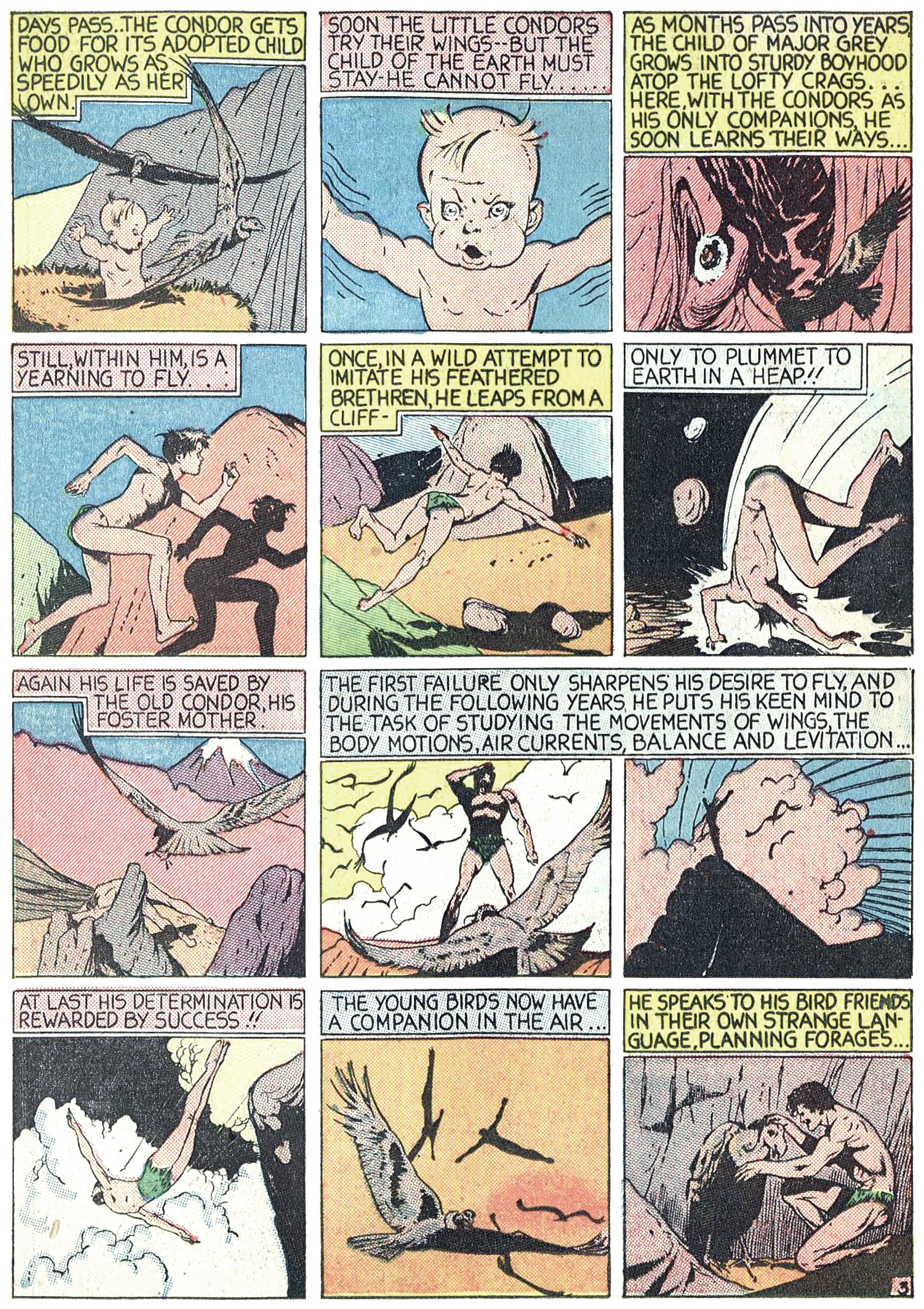
The Black Condor : The Man Who Can Fly Like A Bird
The first failure only sharpens his desire to fly, and during the following years, he puts his keen mind to the task of studying the movements of wings, the body motions, air currents, balance and levitation.
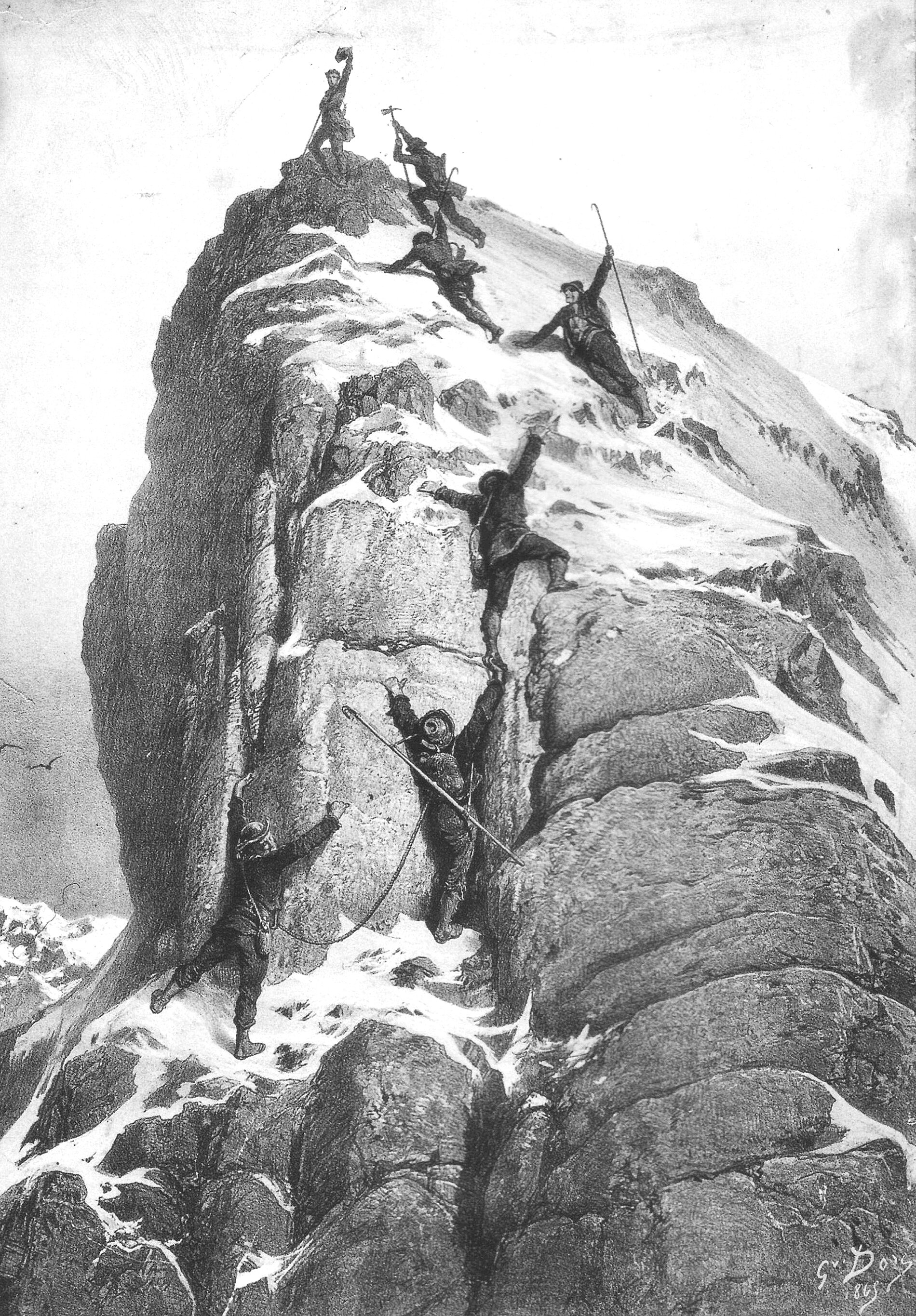
The First Ascent of the Matterhorn
There are few mountains in the world as instantly recognizable as the Matterhorn. Located in the Swiss Alps, this majestic pyramid of gneiss straddles the border between Switzerland and Italy and looms over the Swiss mountain town of Zermatt. Due to its location and visibility, it is legendary within the history of mountaineering . In the 1860’s it was the focus of an international competition to be the first to reach its summit. This story, which includes the first successful summit of the mountain, is a tale of triumph and tragedy, and it serves as a cautionary tale for mountaineers to this day.
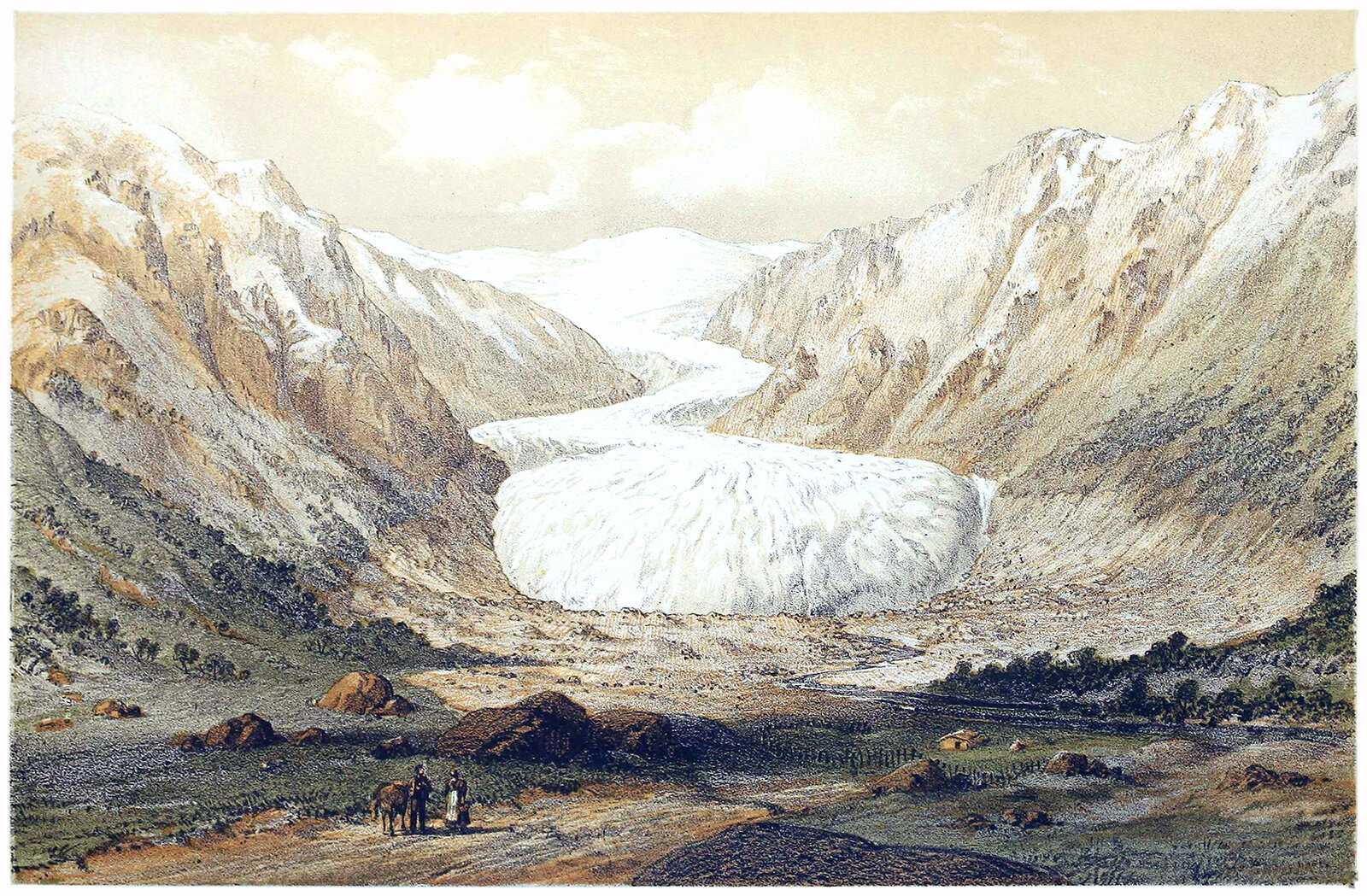
Mountains and Glaciers
The relationship between mountains and glaciers is a fascinating one. Where glaciers exist, the morphology of a mountain created the conditions necessary for a glacier to form. Once formed, a glacier’s growth and movement will slowly erode away the very mountain that created it. Over time, this movement carves and changes the landscape, resulting in moraines, cirques, fjords, and various other landforms.
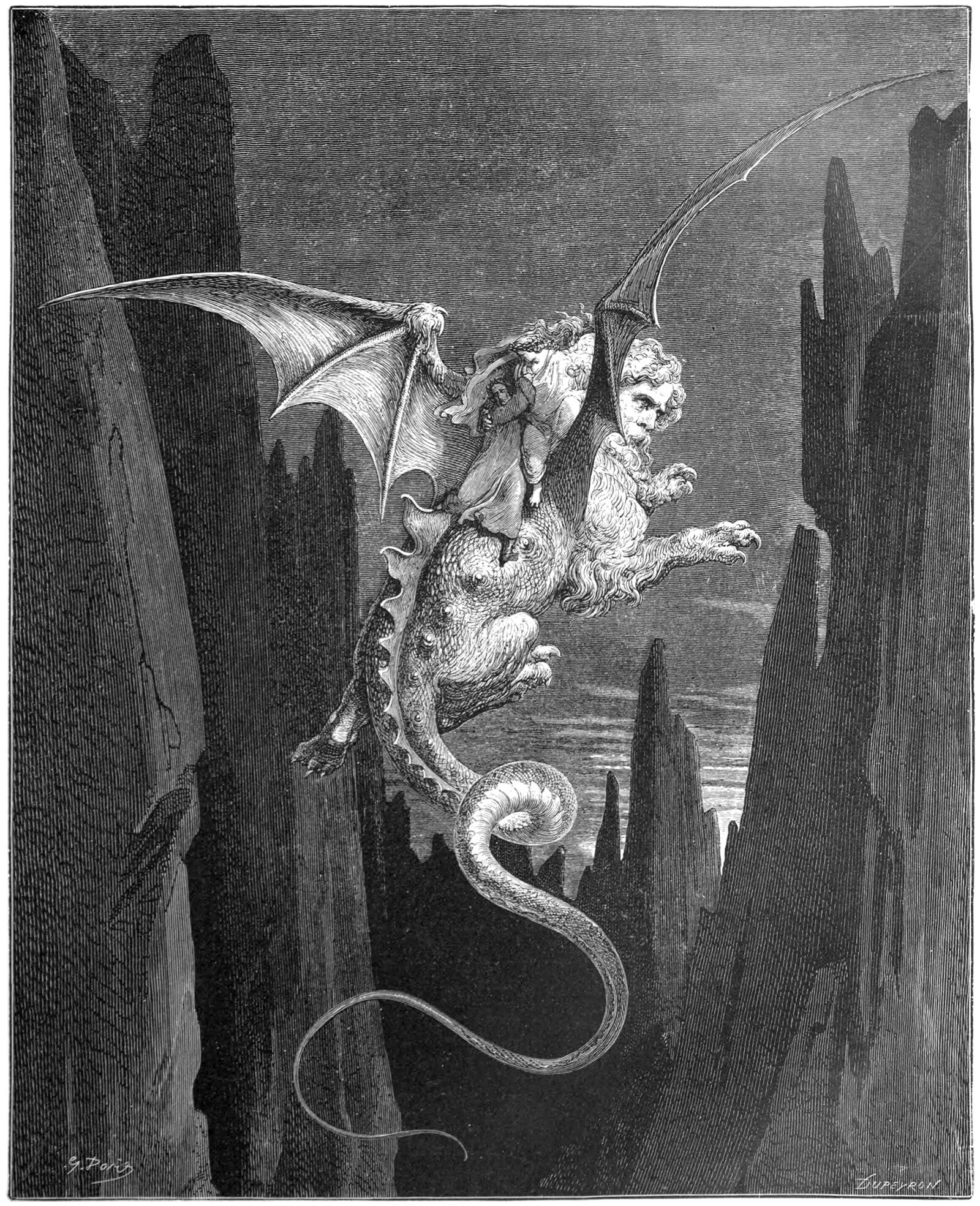
The Flight of Geryon
The above illustration by Gustave Doré shows a scene from Dante’s Divine Comedy. The epic poem follows Dante and Virgil as they pass through Inferno, Purgatorio and Paradiso, and it deals with the concepts of Heaven and Hell, as well as the Seven Deadly Sins. This scene is from Canto XXVII of Inferno, when Dante and Virgil mount the back of the great beast Geryon and fly down from the seventh to the eighth circle of hell.
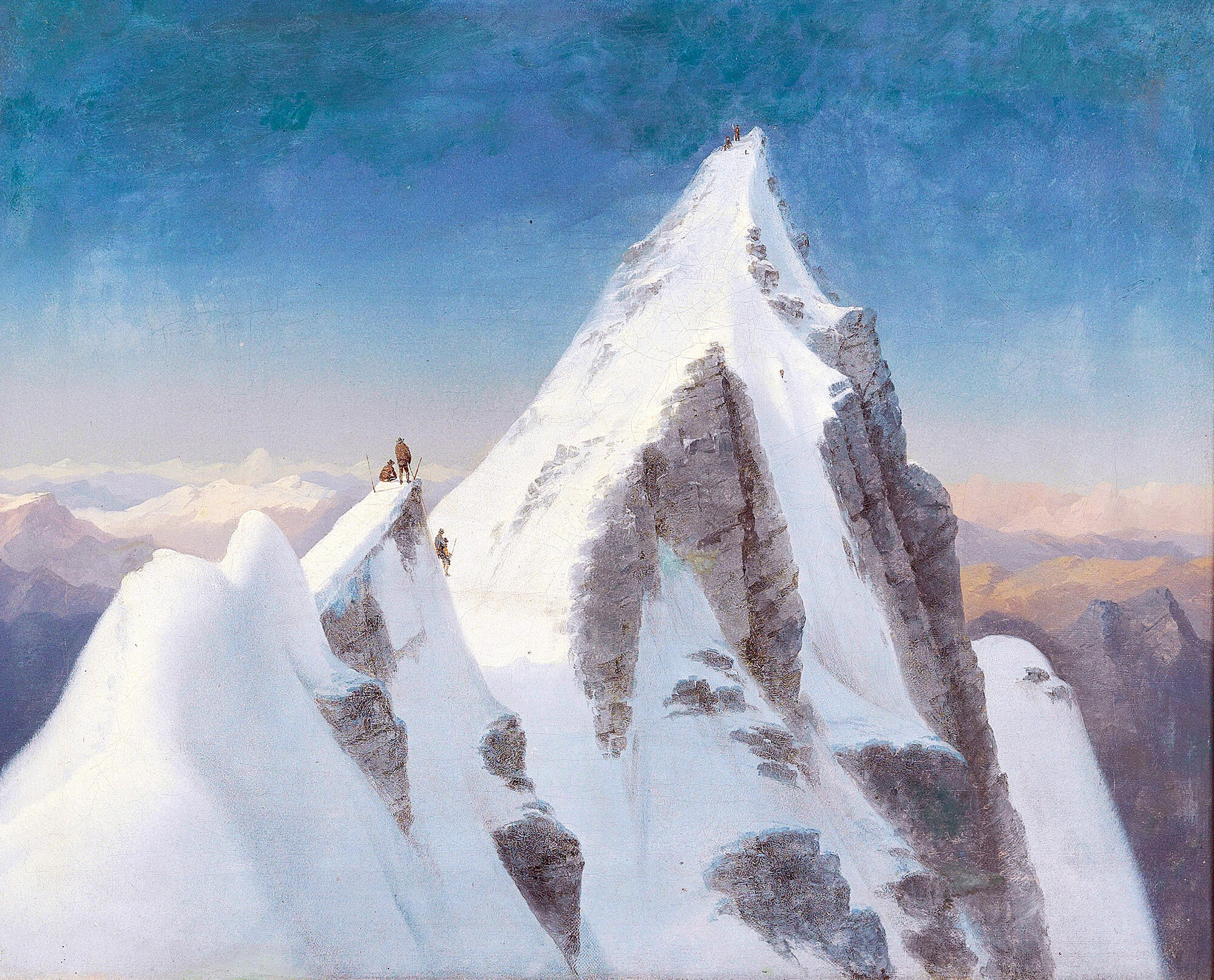
Markus Pernhart’s Großglockner Paintings
The above painting was created in 1871 by Austrian artist Markus Pernhart. It shows the peak of the Großglockner, or Grossglockner, which is the tallest mountain in Austria. It does a great job capturing the contrasting scales of human and mountain. If you look closely, there are two groups of mountaineers pictured atop each peak, dwarfed by the jagged forms of snow and rock. This puts the focus of the painting on the majestic beauty of the mountaintop, rather than the effort it took the mountaineers to reach it. In many ways, these mountaineers are meaningless when compared to the mountain itself. The Großglockner has been around for millennia, and will still be around long after this expedition is finished.
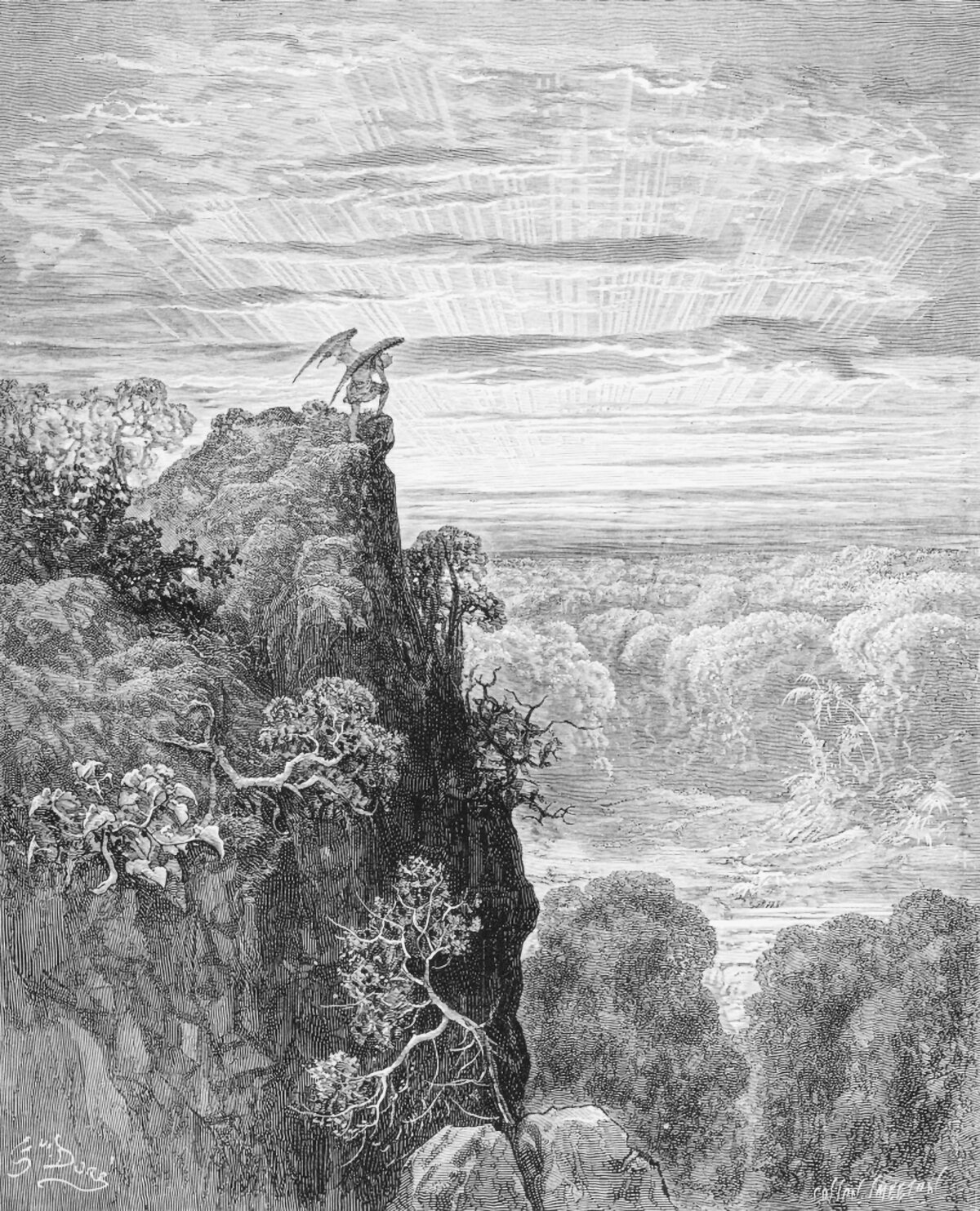
Satan Overlooking Paradise by Gustave Doré
This is an illustration by Gustave Doré for John Milton’s epic poem Paradise Lost. The poem deals with the biblical narrative of original sin, and the first half of the story focuses on Satan and his fall from heaven. In this part of the story, Satan is standing on a mountaintop, overlooking the earthly paradise and considering his plan to corrupt Adam and Eve. Milton is using verticality to enhance the drama of the moment, and by placing Satan in such a high place it allows him to examine his motivations more clearly.
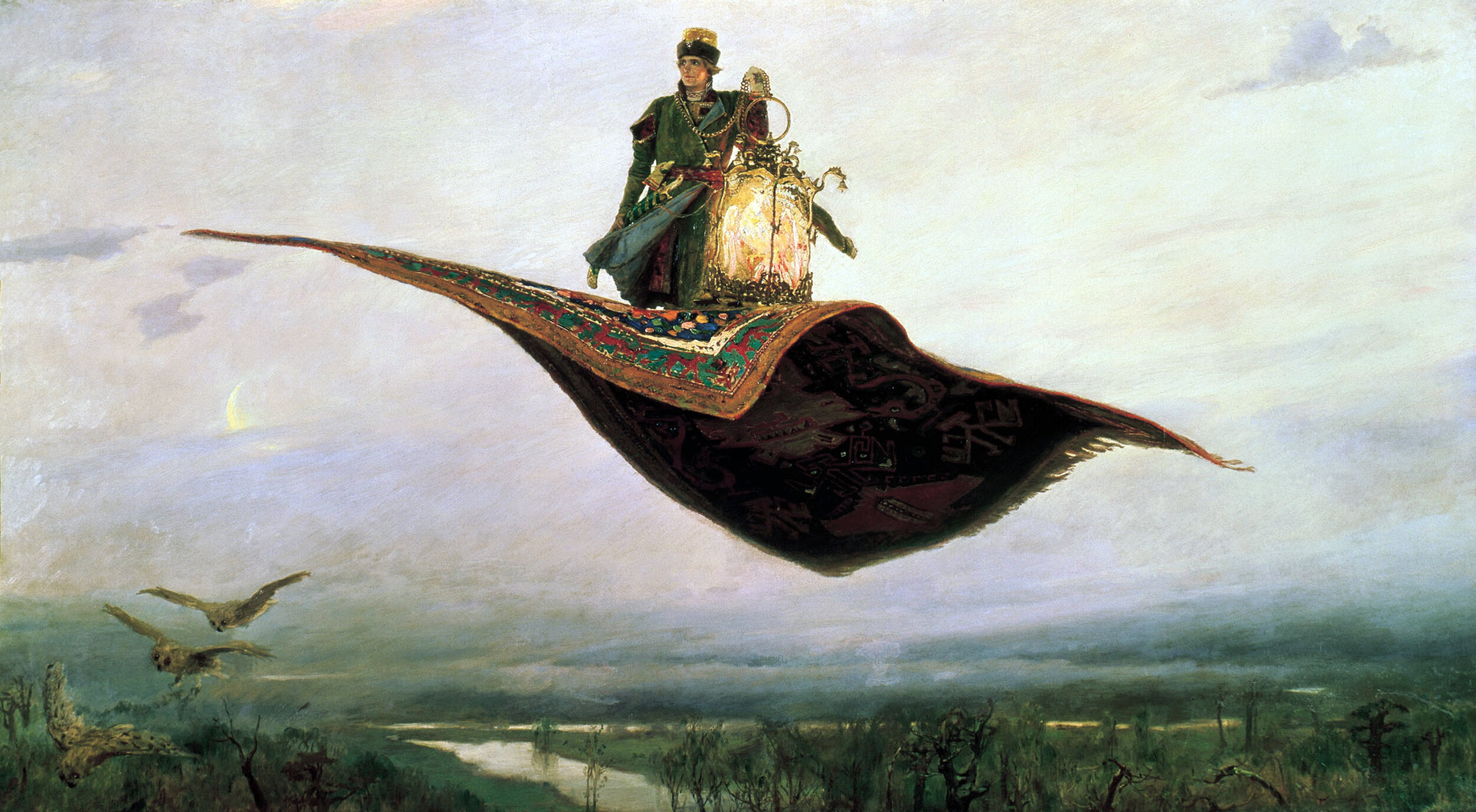
Flying Carpets and the Power of Flight
Flying carpets are the things of folk tales and fantasy. They are magical objects with the power of flight, and anyone who owns one has considerable power over those who don’t. They can quickly transport their owners across the land at great speeds, and they allow their owners to achieve verticality. Here’s a look at the folk tales that established the myth of the flying carpet.
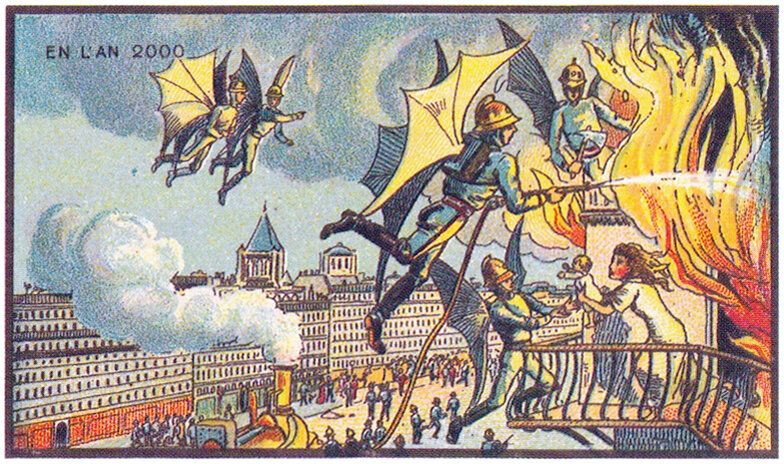
En L’An 2000 : In The Year 2000
Imagine a future where flight is commonplace, and the skies are full of flying people, including police officers, fire fighters, postman, and countless others, zipping around above our heads. That’s what a group of artists led by Jean-Marc Côté dreamed up in 1899 when asked to imagine light-hearted inventions that would contribute to the future. The result was a series of nearly 90 vignettes called En L’An 2000, which means In the Year 2000. The pieces were originally printed as cigarette cards, and later made into postcards. They include a variety of subjects, with a distinct focus on flight and flying machines.
